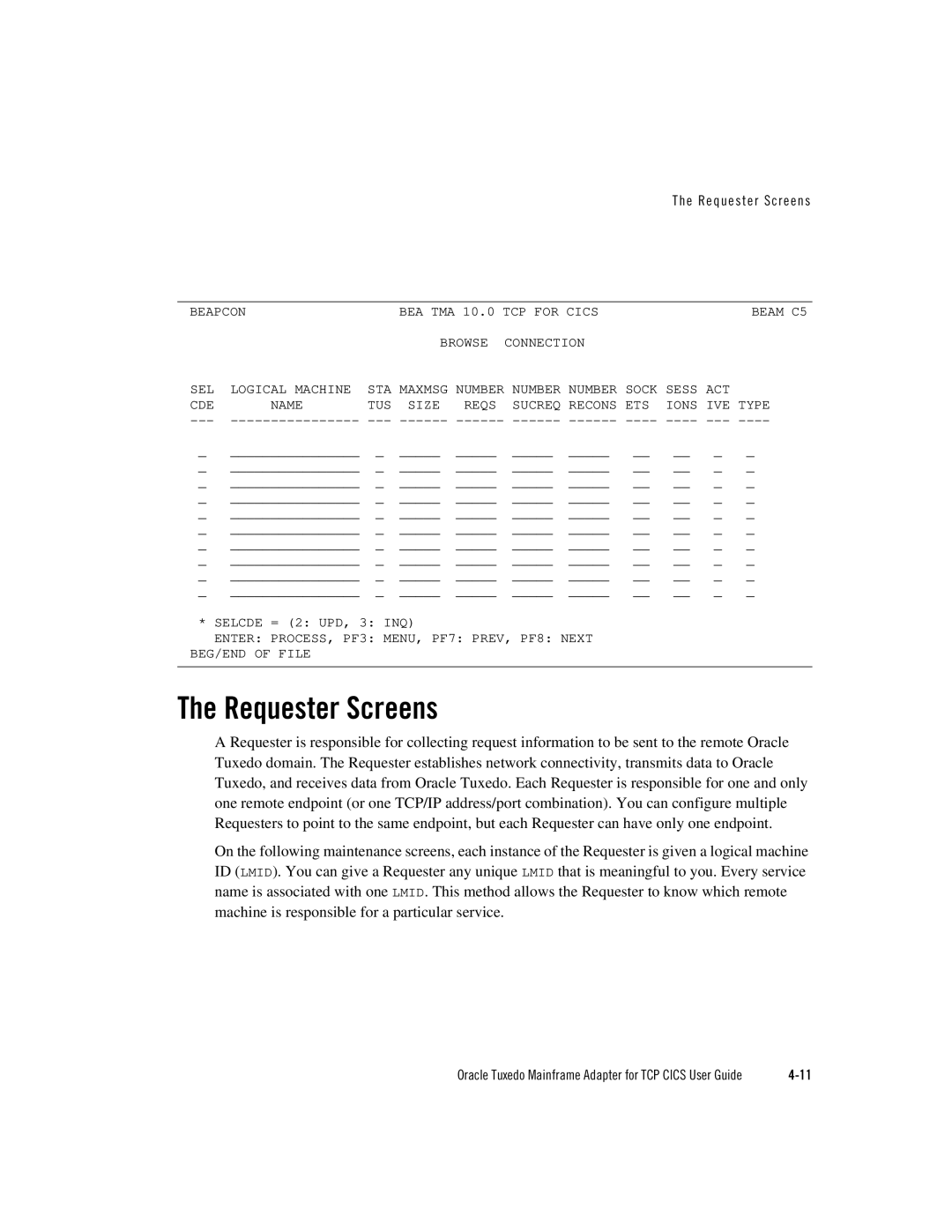
T he Reques ter Screens
BEAPCON |
| BEA TMA 10.0 TCP FOR CICS |
|
| BEAM C5 | |||
|
|
|
| BROWSE | CONNECTION |
|
|
|
SEL | LOGICAL MACHINE | STA | MAXMSG NUMBER | NUMBER NUMBER SOCK | SESS | ACT | TYPE | |
CDE | NAME | TUS | SIZE | REQS | SUCREQ RECONS ETS | IONS | IVE | |
---
_ | ________________ _ _____ _____ _____ _____ | __ | __ | _ | _ |
_ | ________________ _ _____ _____ _____ _____ | __ | __ | _ | _ |
_ | ________________ _ _____ _____ _____ _____ | __ | __ | _ | _ |
_ | ________________ _ _____ _____ _____ _____ | __ | __ | _ | _ |
_ | ________________ _ _____ _____ _____ _____ | __ | __ | _ | _ |
_ | ________________ _ _____ _____ _____ _____ | __ | __ | _ | _ |
_ | ________________ _ _____ _____ _____ _____ | __ | __ | _ | _ |
_ | ________________ _ _____ _____ _____ _____ | __ | __ | _ | _ |
_ | ________________ _ _____ _____ _____ _____ | __ | __ | _ | _ |
_ | ________________ _ _____ _____ _____ _____ | __ | __ | _ | _ |
*SELCDE = (2: UPD, 3: INQ)
ENTER: PROCESS, PF3: MENU, PF7: PREV, PF8: NEXT
BEG/END OF FILE
The Requester Screens
A Requester is responsible for collecting request information to be sent to the remote Oracle Tuxedo domain. The Requester establishes network connectivity, transmits data to Oracle Tuxedo, and receives data from Oracle Tuxedo. Each Requester is responsible for one and only one remote endpoint (or one TCP/IP address/port combination). You can configure multiple Requesters to point to the same endpoint, but each Requester can have only one endpoint.
On the following maintenance screens, each instance of the Requester is given a logical machine ID (LMID). You can give a Requester any unique LMID that is meaningful to you. Every service name is associated with one LMID. This method allows the Requester to know which remote machine is responsible for a particular service.
Oracle Tuxedo Mainframe Adapter for TCP CICS User Guide |
